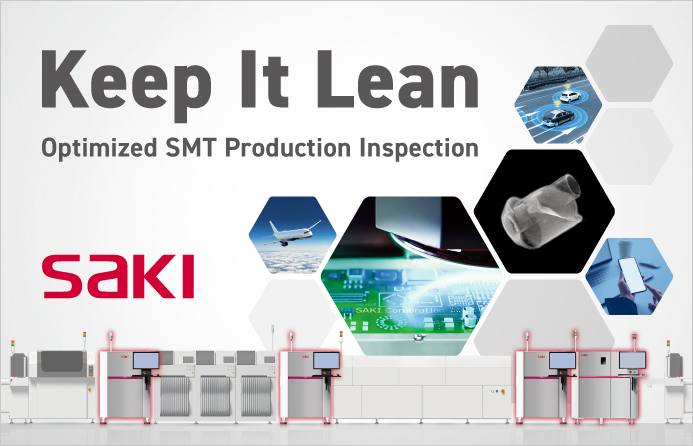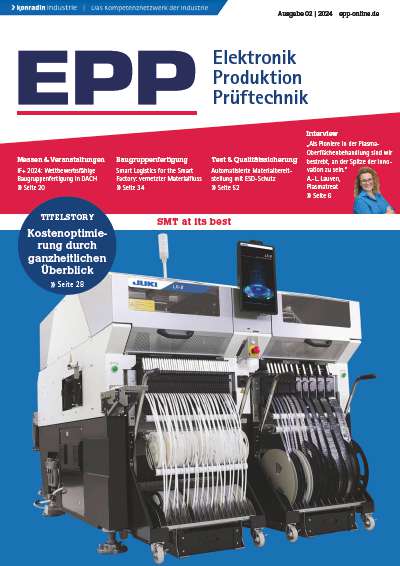If we need one more proof that the world of electronics manufacturing has changed dramatically over the last year, Nepcon West has delivered it. Change was the key word: from materials and processes (lead-free solders and con-ductive adhesives), to advanced high-density packaging (multi-chip boards and CSPs), to consumer-oriented drivers and expectations (wireless communications appliances), to shifting assembly industry structures (OEMs give way to contract manufacturers).
Even venerable Nepcon West itself – as an integral part of a network of several U.S. regional exhibitions and conferences with almost identical themes – is forced to change. This year it lost the important segmentsof pick&place equipment among others like reflow and test. They have moved out to the newly created IPC vehicle APEX 2000, inaugurated barely two weeks later and close by at Long Beach.
Yet Nepcon West, with more than 800 exhibiting companies and a projected 20,000+ attendees, still remains one of the strongest U.S. industry events. It belongs to world leading show organizer Reed Exhibitions Companies (REC), itself a part of the multinational $4.5bn Reed Elsevier media group, a seasoned and steadfast organizer of 334 industry events in 24 countries around the world.
Cozy cornersand rest areas
In the light of all thosechanges, impending or already launched, attendee traffic at Nepcon West 2000 looked a bit thinner this year than in previous years, and many cozy corners and straight stretches of the newly expanded and heavily glossed up Anaheim Convention Center went unused. „It was to be expected, in the new competitive environment,“ according to REC VP Lorenz Hassenstein. At first count, Hassenstein said, on-site registration appeared to be down by 1,500 against the 21,000 pre-registered attendees. The possible causes are manifold: a booming U.S. economy actually may have reduced the need for extensive travel. Technologies like Internet B2B trade exchanges might begin to affect traditional deal making at face-to-face meetings like Nepcon West. „When the attendance reports come in,“ says Hassenstein, „they will tell us how to address the issues we need to address and make changes.“
One thing is certain, Hassenstein insists: Nepcon West hasn’t changed its focus – perhaps it’s slightly shifted the weights in regards to how it covers the various industry segments. Despite this year’s secession of almost all vendors of equipment for pick&place (with Europlacer, Comdisco and Mimot among the notable exceptions), Hassenstein says, „Nepcon has always been a national and an international event, and it will retain that status. It is our intention to serve the entire market place. If there is any way to further that, we will happily do it.“ Fred Schlieper of Nicolet Instruments concurs: „Nepcon West has always been a good show for us. We have signed up again for next year.“ His only concern: the impending splitof visitor attendance and industry participation between two events and the resulting indecision.
A cry for anintegrated show
Case in point: the leadingremarketer of semiconduc-tor manufacturing equipment, Comdisco of San Diego, California, which has just announced a major expansion of its inventory and its international reach. Some 5,000 pieces of used but manufacturer-maintained equipment are listed on its website (comdisco.com) for sale or lease. Yet, Comdisco has a strong presence only at Nepcon West, not at APEX. „We can not justify the expense,“ says VP marketing Sergio Perez. „What we would like to see is an integrated show.“ Stay tuned…
As if to document that placement is still a central topic of Nepcon West, there was the newly created Pick and Place Evaluation Center, a roped off, 2,000 sq. ft. demonstration area not unlike the well-attended TAC (Technology Advancement Center) with its five working assembly lines. Like TAC, the center was designed and operated by the consulting firm RRA Technical Services. It demoed four leading high-speed placement machines side by side, tended to by neutral experts for a comparison of specs and performances – free of the sales pitches of their makers. Various performance reports provided by RRA and statistical modeling rounded out the demo of pick&place.
Japanese companiesare leading lead-free
If there was one keyword written all over the show floor and conference tables, it was lead-free. The time has come, for the U.S. electronics industry as well to facilitate the transition to alternative interconnect technologies. Following the lead of the Japanese (lead-free after 2001) and Europeans (lead-free after 2004), it’s no longer a question of „if“ and „why“ but of „when“ and „how.“ A significant sign of change: lead-free pervaded all eight tracks (design, assembly, HDI, inspection, management, packaging, test, contract manufacturing) of the accompanying conference with its close to 100 sessions.
„The Japanese seem to have embarked on eliminating the lead from electronic assembly,“ says Peter Biocca of Multicore (which just prior to the show had been acquired by Loctite). „The switchover from lead will cause the American industry to react.“ In time, lead-free could become a hot consumer marketing button in the U.S., too. „What is pushing the issue here is certainly not environmental,“ Biocca adds. But the horses are out of the barn and there is no stopping them anymore. „There are also mechanical advantages of lead-free due to the harder alloys used. Sooner or later the consumer market will create the pressure for change.“
So, when will we see the first lead-free mobile phones? Good question, replies Steve Sytsma of RRA, in charge of the five up-to-date TAC demo assembly lines at Nepcon West. „Certainly in the next couple of years. All the makers are looking at it. I know one U.S. manufacturer, but I can’t tell you who it is.“ To show alternatives in lead-free assembly, he has set up two lead-free lines for this year’s TAC: First, a lead-free HDI line for double-sided attachment of standard SMD, BGA, CSP and DCA devices on a two-layered 0.062-in board with tin pad metallization. And, second, a Y2K assembly line for flip chip, BGA and CSP, using conductive adhesive.
In-line businessfor a quantum leap
In the HDI line, top and bottom reflow soldering was done with a tin-silver-copper alloy. „We looked at five different lead-free solder formulations from different vendors,“ Syts-ma says. „Tin-silver-copper provided the best performance form a printing perspective, as well as a low eutectic melting point at 217°C.“ One drawback remains: reflow ovens must be set to higher temperatures. „In fact, we have to hit 230°C on the board to be able to do an appropriate reflow.“ Consequently, the potential trouble lies in the parts. „Moving away from the traditional 63/37 Sn/Pb is a quantum differ-ence. It’s like 1979 when theJapanese introduced surface mount. It took until 1986/87 for SMT to really take hold.“
The other alternative, with conductive adhesives, was demonstrated on a Y2K (it’s the year 2000) assembly line for a live (fully functional) two-sided circuit board. It featured high-speed stencil printing of a conductive paste from Emerson & Cumings with high silver content and the placement of various (0.015-in) fine-pitch, flip chip, BGA and CSP devices with capillary underfilling. This material provides, according to Sytsma, a mechanical strength 30 to 50% higher than traditional conductive adhesives. The adhesive performs well in double cycling. It is currently evaluated in under-the-hood, automotive prototype applications. At the end of the line, to show the conductive adhesive really works, and to prove the viability of the entire process, some LEDs on the board flashed TAC when connected to a battery.
Another TAC line, featuring area array assembly, was set up to show the capabilities of building chip scale packages with rigid interposers, as they are increasingly being utilized in low-cost, handheld consumer products, and of facilitating multiple package interconnect. Key requirements and features of this line: wirebonding of COB (chip on board) die to an organic substrate with gold wire, along with the dispensing and curing of die encapsulant, sphere attach, testing and sorting. Does all of this still need to be demonstrated for viability? „We show a little bit of a different approach,“ Sytsma says. „Low volume is the core issue here. There are many manufacturers that need only one or two wafers per application. We show that flip chip is testable in low volume.“
Finally, some new developments at the IVI (Interchangeable Virtual Instruments) foundation since their last group presentation at Productronica, of the version 2.0 of class specifications and the C and COM language interfaces. At their meeting in Austin, Texas, just prior to Nepcon West, IVI members voted to incorporate the association as a non-profit entity, thereby solidifying the organization and at the same time protecting its intellectual property. „With 50 participating members, we knew we had to protect the architectural components necessary for interchangeability to reflect the fact that they are owned and supported by the group rather than by the individual companies,“ says reelected IVI chairman Scott Rust. Since last fall, six more companies have signed up for IVI membership. Werner Schulz
Fax +01-203-840-9656
EPP 164
Unsere Webinar-Empfehlung
SAKI is a Japanese supplier of SPI, AOI, AXI, THD and coating inspection solutions as an all-in-one hardware and software platform.
Teilen:











